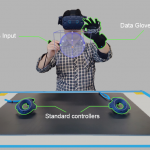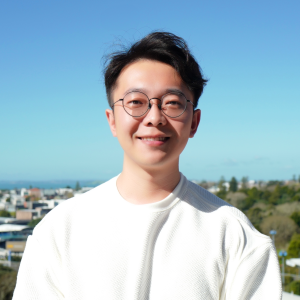Asymmetric Interaction for VR sketching
This project explores how tool-based asymmetric VR interfaces can be used by artists to create immersive artwork more effectively. Most VR interfaces use two input methods of the same type, such as two handheld controllers or two bare-hand gestures. However, it is common for artists to use different tools in each hand, such as a pencil and sketch pad.
The research involves developed interaction methods that use different input methods in the edge hand, such as a stylus and gesture. Using this interface, artists can rapidly sketch their designs in VR. User studies are being conducted to compare asymmetric and symmetric interfaces to see which provides the best performance and which the users prefer more.
Project Video(s):https://youtu.be/FVk5lWtntGk
Publications
-
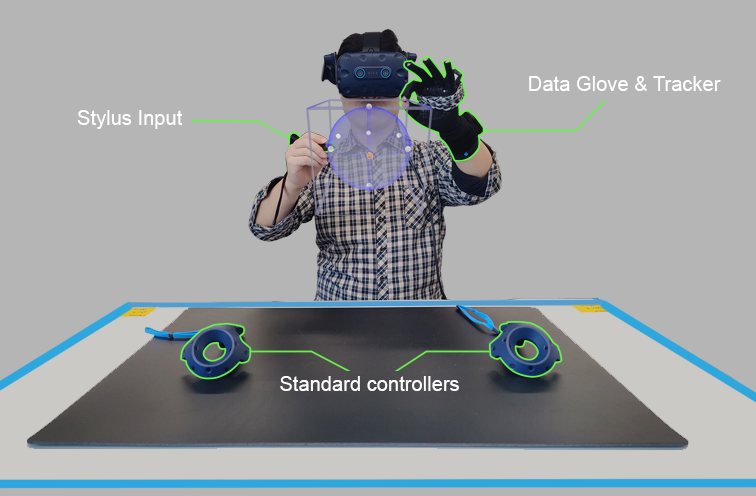
Asymmetric interfaces with stylus and gesture for VR sketching
Qianyuan Zou; Huidong Bai; Lei Gao; Allan Fowler; Mark BillinghurstZou, Q., Bai, H., Gao, L., Fowler, A., & Billinghurst, M. (2022, March). Asymmetric interfaces with stylus and gesture for VR sketching. In 2022 IEEE Conference on Virtual Reality and 3D User Interfaces Abstracts and Workshops (VRW) (pp. 968-969). IEEE.
@inproceedings{zou2022asymmetric,
title={Asymmetric interfaces with stylus and gesture for VR sketching},
author={Zou, Qianyuan and Bai, Huidong and Gao, Lei and Fowler, Allan and Billinghurst, Mark},
booktitle={2022 IEEE Conference on Virtual Reality and 3D User Interfaces Abstracts and Workshops (VRW)},
pages={968--969},
year={2022},
organization={IEEE}
}Virtual Reality (VR) can be used for design and artistic applications. However, traditional symmetrical input devices are not specifically designed as creative tools and may not fully meet artist needs. In this demonstration, we present a variety of tool-based asymmetric VR interfaces to assist artists to create artwork with better performance and easier effort. These interaction methods allow artists to hold different tools in their hands, such as wearing a data glove on the left hand and holding a stylus in the right-hand. We demonstrate this by showing a stylus and glove based sketching interface. We conducted a pilot study showing that most users prefer to create art with different tools in both hands. -
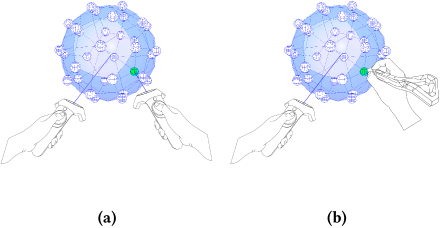
Tool-based asymmetric interaction for selection in VR.
Qianyuan Zou; Huidong Bai; Gun Lee; Allan Fowler; Mark BillinghurstZou, Q., Bai, H., Zhang, Y., Lee, G., Allan, F., & Mark, B. (2021). Tool-based asymmetric interaction for selection in vr. In SIGGRAPH Asia 2021 Technical Communications (pp. 1-4).
@incollection{zou2021tool,
title={Tool-based asymmetric interaction for selection in vr},
author={Zou, Qianyuan and Bai, Huidong and Zhang, Yuewei and Lee, Gun and Allan, Fowler and Mark, Billinghurst},
booktitle={SIGGRAPH Asia 2021 Technical Communications},
pages={1--4},
year={2021}
}View: https://dl.acm.org/doi/abs/10.1145/3478512.3488615
Video: https://www.youtube.com/watch?v=FVk5lWtntGkMainstream Virtual Reality (VR) devices on the market nowadays mostly use symmetric interaction design for input, yet common practice by artists suggests asymmetric interaction using different input tools in each hand could be a better alternative for 3D modeling tasks in VR. In this paper, we explore the performance and usability of a tool-based asymmetric interaction method for a 3D object selection task in VR and compare it with a symmetric interface. The symmetric VR interface uses two identical handheld controllers to select points on a sphere, while the asymmetric interface uses a handheld controller and a stylus. We conducted a user study to compare these two interfaces and found that the asymmetric system was faster, required less workload, and was rated with better usability. We also discuss the opportunities for tool-based asymmetric input to optimize VR art workflows and future research directions. -
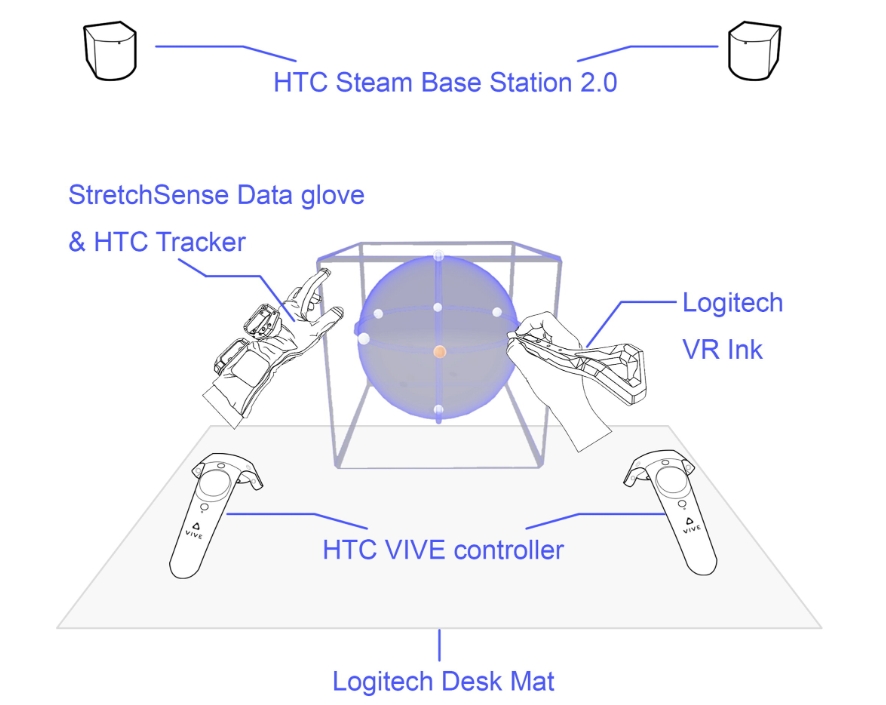
Stylus and Gesture Asymmetric Interaction for Fast and Precise Sketching in Virtual Reality
Qianyuan Zou, Huidong Bai, Lei Gao, Gun A. Lee, Allan Fowler & Mark BillinghurstZou, Q., Bai, H., Gao, L., Lee, G. A., Fowler, A., & Billinghurst, M. (2024). Stylus and Gesture Asymmetric Interaction for Fast and Precise Sketching in Virtual Reality. International Journal of Human–Computer Interaction, 1-18.
@article{zou2024stylus,
title={Stylus and Gesture Asymmetric Interaction for Fast and Precise Sketching in Virtual Reality},
author={Zou, Qianyuan and Bai, Huidong and Gao, Lei and Lee, Gun A and Fowler, Allan and Billinghurst, Mark},
journal={International Journal of Human--Computer Interaction},
pages={1--18},
year={2024},
publisher={Taylor \& Francis}
}This research investigates fast and precise Virtual Reality (VR) sketching methods with different tool-based asymmetric interfaces. In traditional real-world drawing, artists commonly employ an asymmetric interaction system where each hand holds different tools, facilitating diverse and nuanced artistic expressions. However, in virtual reality (VR), users are typically limited to using identical tools in both hands for drawing. To bridge this gap, we aim to introduce specifically designed tools in VR that replicate the varied tool configurations found in the real world. Hence, we developed a VR sketching system supporting three hybrid input techniques using a standard VR controller, a VR stylus, or a data glove. We conducted a formal user study consisting of an internal comparative experiment with four conditions and three tasks to compare three asymmetric input methods with each other and with a traditional symmetric controller-based solution based on questionnaires and performance evaluations. The results showed that in contrast to symmetric dual VR controller interfaces, the asymmetric input with gestures significantly reduced task completion times while maintaining good usability and input accuracy with a low task workload. This shows the value of asymmetric input methods for VR sketching. We also found that the overall user experience could be further improved by optimizing the tracking stability of the data glove and the VR stylus.

